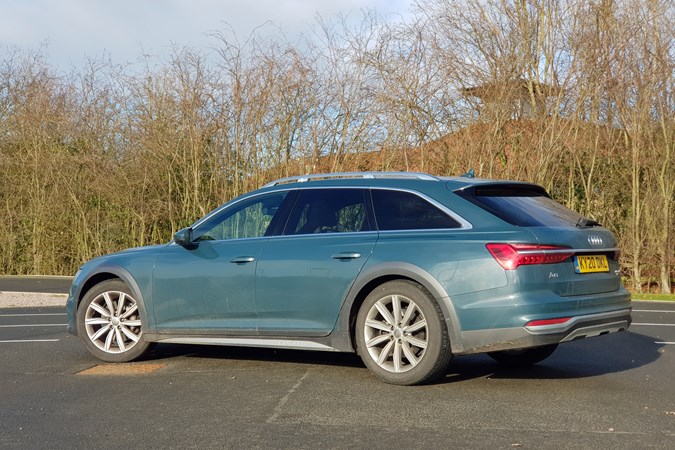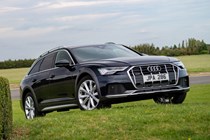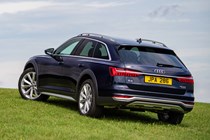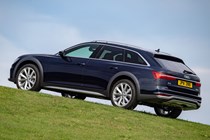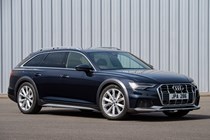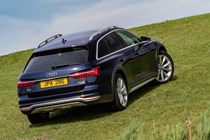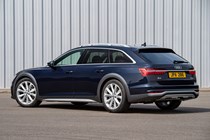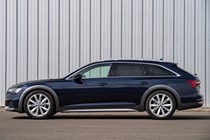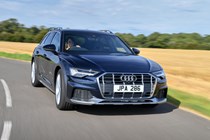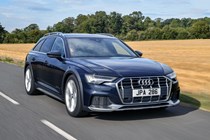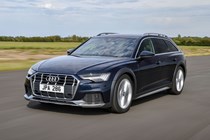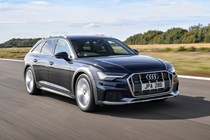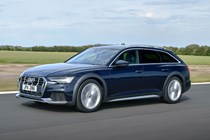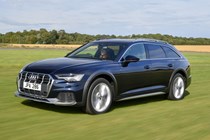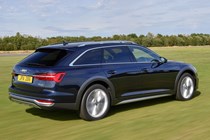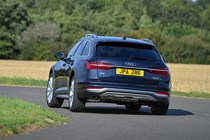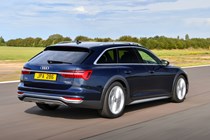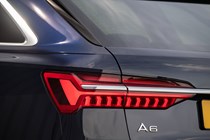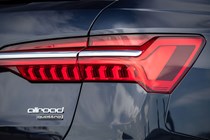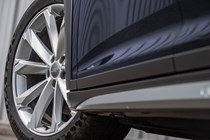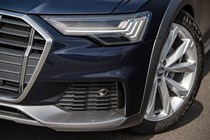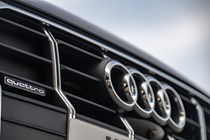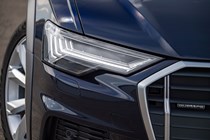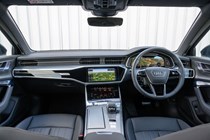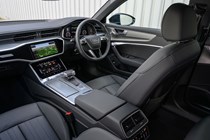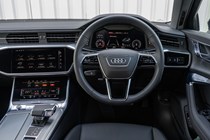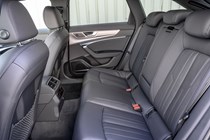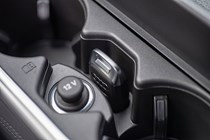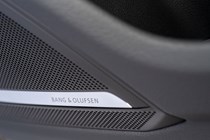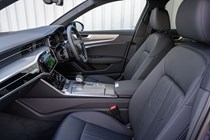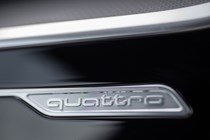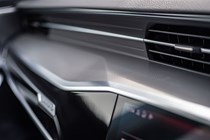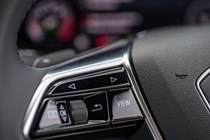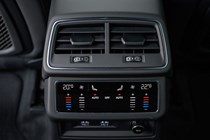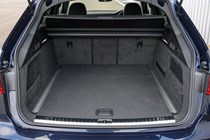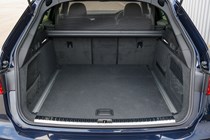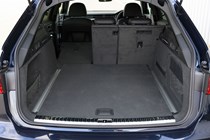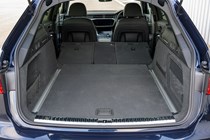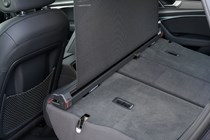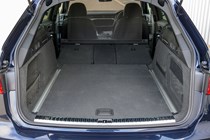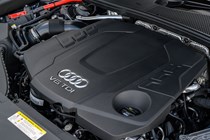Audi A6 Allroad (2019-2021) long-term test
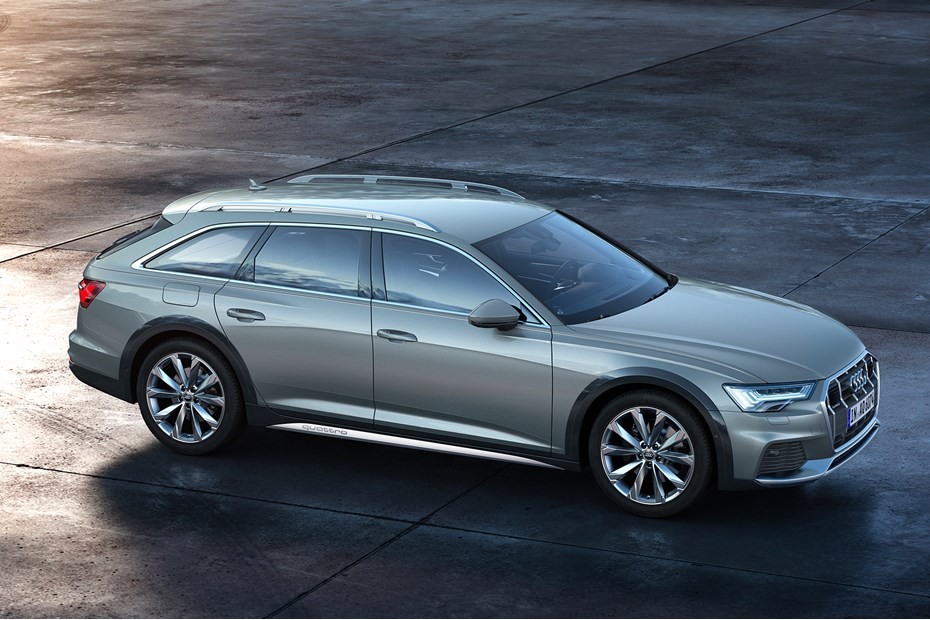
Update 1: Welcome
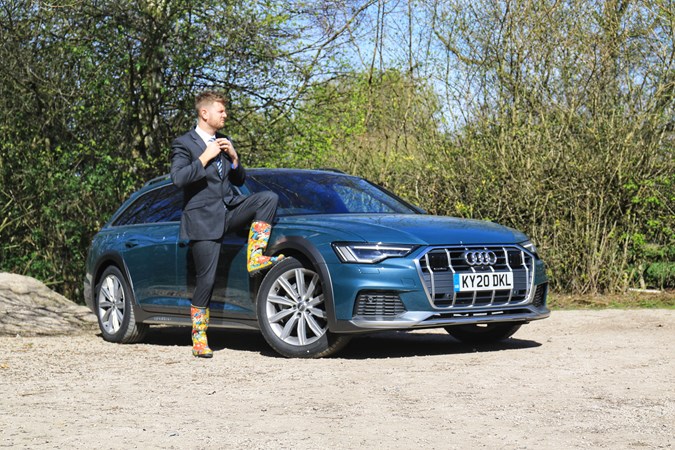
Welcome to the fleet, Audi A6 Allroad – a premium estate for non-SUV people who still want to go off-road
There’s a great rumour about the Audi A6 Allroad that I have spent absolutely no time fact-checking, but am happy to continue propagating until someone tells me otherwise – apparently, the people who buy this car are Audi’s most affluent customers.
One percenters don’t buy an R8 supercar, nor the A8 limousine (that car will make an appearance later, though) or even the RS 6 megawagon. Not even the SUV coupe Q8, the model that is surely the ultimate expression of disposable income these days.
No, the incredibly rich like nothing more than a business-like A6 Avant with outdoorsy jacked up suspension and off-road cladding. I have tried to illustrate this point with my outfit in the image above, but because the only wellies I own have a comic-book print on them, the effect might be lost on a small screen.
However, it won’t have escaped your notice (not just because of the awful wellies) that I am not incredibly rich, so you might be wondering why I am spending the next six months in a car like this.
Well, the official reason is that although Parkers has run an older A6 Saloon in the past, we haven’t had one of this generation, nor any previous Avant. We’ve also had plenty of SUVs but not an off-road estate car like this. So there’s an editorial itch to scratch.
From my perspective though it’s simply to answer a question I’ve had in my mind for years – why doesn’t anyone make an estate version of a luxury limo?
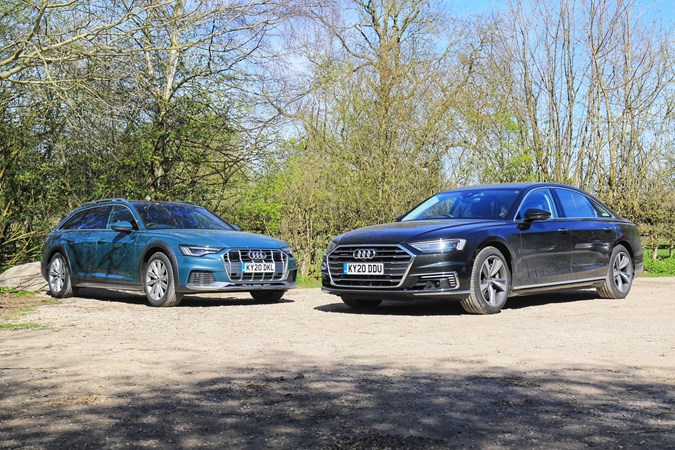
No, that’s not as mad as it sounds. A car like the Mercedes-Benz S-Class, BMW 7 Series or Audi A8 has almost everything the perfect family car needs – it’s quiet, comfortable, full of driver assistance tech and has masses of rear legroom, so you can get a bulky Isofix seat in without affecting the front passengers. Although admittedly it’s not a cheap solution.
Even better, in the A8 pictured above there are a pair of television screens that have kept my children entertained on long journeys or trips to the supermarket. Every time I bring a car like this home, I think, why isn’t there a version of this with a big boot, towbar and pumped up ride height so I can use it to transport us and our bikes to the various remote locations we like to ride them?
Then I realised it already exists, but it’s called the A6 Allroad. Long travel air suspension with absolutely zero interest in dynamism? Check. Vast rear legroom and luggage capacity? Check. Maximum cabin refinement from a smooth six-cylinder engine? Also check.
We’ll look a bit deeper into this comparison after doing a few more miles in the A6 but early impressions are good. It’s super quiet on the move, the diesel engine is unobtrusive but powerful, and the ride is very good indeed.
Helping matters a bit is the…err…visually unique configuration that we chose for this car. For a start it’s the base Sport spec, so you get smaller 19-inch wheels with bigger sidewalls (top spec Vorsprung gets 21s!) and it also unlocks a load of interior options, oddly.
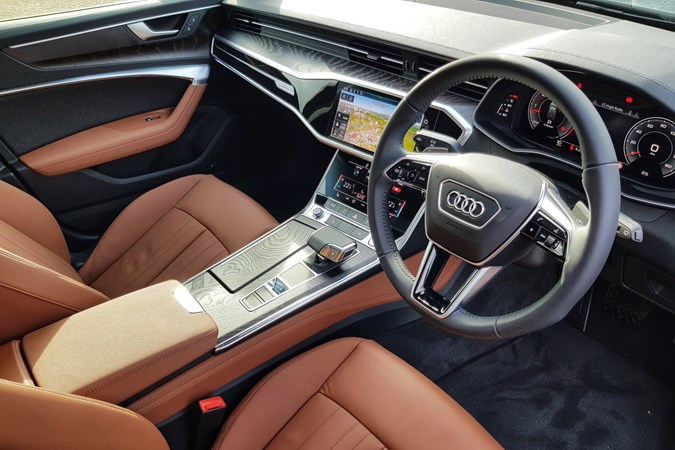
Top tier cars come with firm sports seats, a dark leather interior and silver trim on the dash. That’s a cool look in an A6 Avant, but in an Allroad, surely you want to bring the great outdoors in? Pick the Sport trim and you can do so with normal squashy armchairs in a warming brown hide, with some frankly brilliant fine grey ash trim to replace the cold metal.
I appreciate it’s not to everyone’s tastes but teamed with Avalon green paint, I think it looks absolutely excellent.
Anyway, that’s all for now. It’s Friday night and I’ve got a magnum of Chateau Margaux with my name on it.
Update 2: Comfort and Practicality
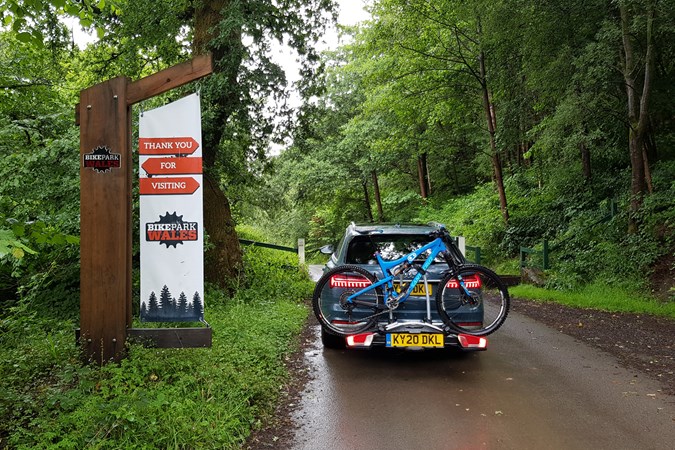
This month we go in hard on the A6 Allroad’s key personality traits – namely how relaxing it is to be inside, and how much you can cram into the boot
Arguably the two most important considerations when reviewing a large, luxurious estate car like the Audi A6 Allroad are how comfortable it is and how much stuff you can cram into it. Short on time? This is quite a hefty update so feel free to skip to the conclusion at the bottom.
Normally I’d talk about the performance and handling first but those seem far less important this time around, so for now I’ll sum them up as ‘sufficient’ and ‘secure’ before expanding in a later update.
On the second point though, I’m happy to report that for the most part the Allroad drives in a way that gives little regard to sporting pretentions, and this is a really good thing. You can sharpen up the standard-fit adaptive air suspension if you want, and I’ll go more in-depth on how this transforms the handling later, but I usually leave it in ‘Auto’, as it seems to provide the best balance.
Do so, and the car glides along the surface like a limousine, with a soft and quiet ride whether you’re sitting in the front or the back. This car is on the standard 19-inch wheels too, so it has a lot of squashy sidewall, which helps no end. Switching into Comfort mode improves the ride further, but can make your passengers feel a bit sea sick while cornering, as the bodywork leans like a banking fighter jet long before the tyres reach anything like the limit of grip.
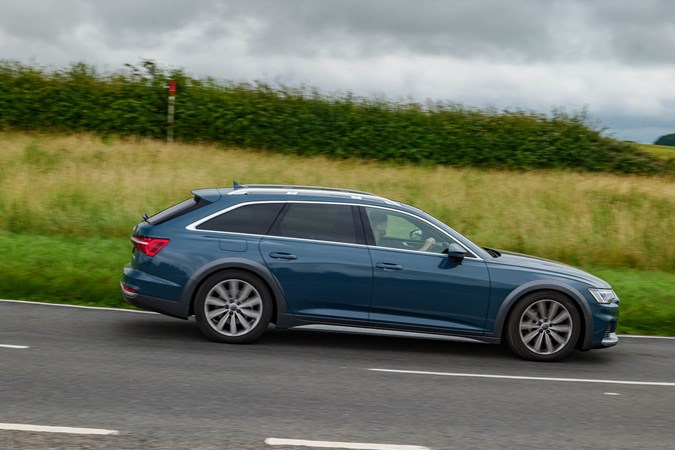
The engine is unobtrusive with a massive wedge of always-available torque that means you rarely have to call upon the comparatively noisier upper-end of the rev counter. Its six cylinders deliver smooth and discreet propulsion with almost no clatter or vibration even at tickover. As time goes on though, I have started to notice its whistley turbo, particularly when only pressing the throttle a little bit, although I quite like this noise so it doesn’t bother me. I’m not sure whether it’s got louder over time or I’m just noticing it more. I’m also unfairly comparing it to the A8 in this department, which was double-glazed and basically like driving in the cold vacuum of space.
In the front I didn’t spec the optional sports seats as the standard chairs looked much squashier, but from new they were quite firm and a bit flat. Over time they’ve softened a bit (like the seats in my old Audi A4 Avant did), but still don’t quite deliver when it comes to supportive bolstering. That said, this isn’t really a car you drive in a way that requires being pinned into the seat. I do miss the extendable thigh cushion you get on the optional seats though, but that’s a tall person problem.
In terms of storage you get a massive glovebox, a smaller hideway drawer near the driver’s right knee, good door pockets and two cupholders near the gear shifter. Under the armrest is a shallow cubby with two USB chargers and that’s about it in the front, there’s no deep box at the base of the dashboard like you get in an E-Class because Audi has put a massive screen for the climate controls there.
In the back, there’s an abundance of leg and headroom despite the panoramic roof (this normally eats into the space above) so I’d say it’s a good option. It’s actually made up of two glass panels, which has good and bad points, in that it doesn’t let in as much light but does mean I can have the blind open in the front but closed in the back while my children are asleep.
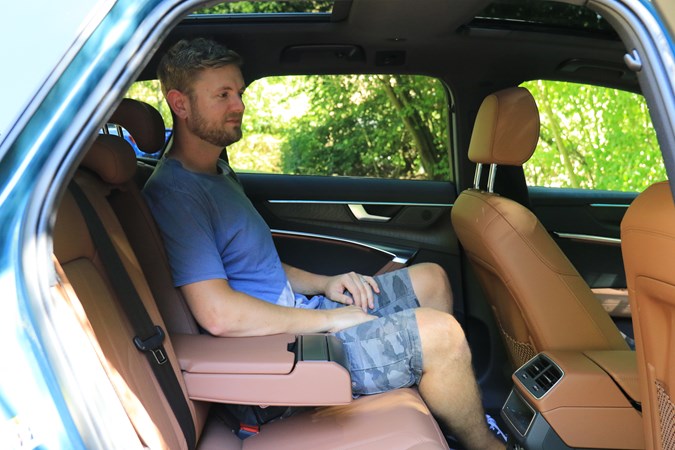
– If I can fit so can you, unless you’re Shaquille O’Neal
The rear seats are comfortable on a long journey and a wide armrest separates your rear passengers, complete with two cupholders and a shallow square storage space. You get bottle-sized door bins, magazine nets in the seat backs, and two individual air vents, but only a 12v socket as standard instead of a USB outlet. Spec the rear climate control option and you get a touchscreen panel and two USB sockets, though.
It’s just as nicely trimmed in the back with leather extending all the way to the door for added luxury and also to stop the seatbelt rattling around when not in use. There is a small run of scratchy plastic over your shoulder where the belt runs down but otherwise it feels just as plush as the front.
I wouldn’t want to be a fifth passenger for much more than a short drive though – shoulder space is ok but you’re pushed up a bit closer to the roof – and the wide transmission tunnel, although great for making the occupants left and right feel separate, means there isn’t much space for your feet.
Additional clever features are plastic covers for the Isofix mounts so you don’t have to go rooting around under the cushioning to install a car seat and neat touch-sensitive LED spotlights will have the initiated searching for an on/off switch.
What’s the bootspace like?
Just like the A6 Avant, in the Allroad you get 565-litres of luggage space, expandable to 1,680 litres by dropping the rear seats. You do this using a handle in the boot, which is a great time- and faff-saving feature.
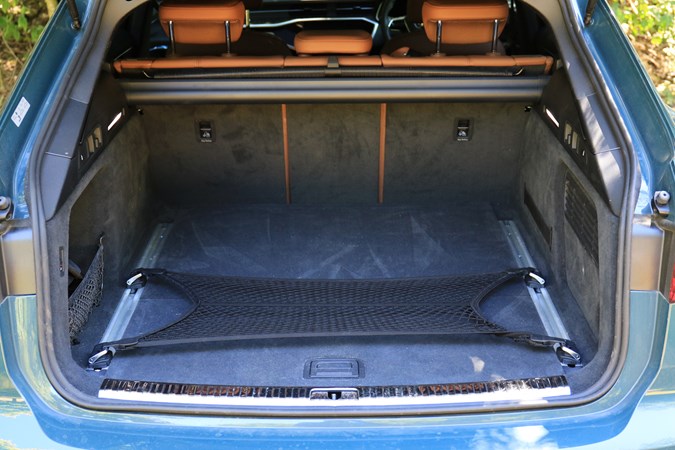
Those are good numbers but not awe-inspiring. But that’s the thing about a big estate car – you imagine it’s going to have a boot the size of a modest box room, but in reality it’s usually only slightly more capacious than a medium-sized estate, because a lot of the car’s extra length is given over to rear seat space.
Granted my perspective has been a bit skewed by my Skoda Octavia Estate long termer; after that car, all boots look small. It was the absolute master of space efficiency – a foot shorter and narrower than the Audi but with 610/1,740 litres on offer. It also cost half as much, but let’s not get hung up on that.
In terms of the Audi’s direct rivals, the Mercedes E-Class All Terrain’s boot is larger, as is the Audi Q7’s while the Volvo V90 Cross Country’s is smaller, and the BMW 5 Series Touring (there’s no off-road variant) is pretty much on par. The left-field Subaru Outback posts some suitably enigmatic figures – its boot volume is smaller with the seats up, but larger with them down.
I’d say for most daily applications the Audi is big enough – offering a deep, square space that is only really encroached upon by the steep rake of the rear window (something of an Avant hallmark).
I managed to get a new dishwasher in there with no bother when our old one broke, and it’ll take my son’s 20-inch wheeled mountain bike diagonally with space to spare for his sister’s balance bike and a couple of rucksacks, with all the seats in place. There’s no storage hidden under the floor though – that’s full of spare wheel, subwoofer and various spare or emergency parts.
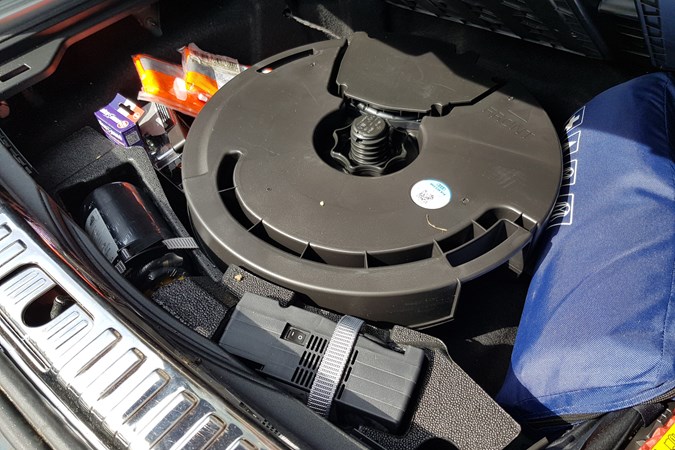
There’s a hook either side for hanging shopping bags (great for bike helmets), plus a little recess on the left to tuck other bits and bobs into. An elasticated net that hooks into the rails left and right can also be used to secure larger items from sliding around. I’ve also got a pull out divider thing that hooks into the ceiling so you can properly pack the boot to the rafters. In practise though, I reckon I could get more in my BMW 3 Series Touring using the same method, even though it had 50 litres less space, because you could shut the tailgate and then post things through the openable glass section. To do the same in the Audi you’d have to pack it tighter than Tetris otherwise it would all just fall out.
The load cover moves automatically when you open and close the boot too – a feature I always strangely value despite the fact I generally take the load cover out and leave it in my garage for the duration because they always just get in the way. That means when you close the boot I can just hear the motors for the load cover whirring away, and the rear windows are tinted so dark I’m not sure why you’d need a tonneau anyway.
Also annoying, when it shouldn’t be, is the useful hands-free tailgate. You simply kick a foot under the bumper to open or close the boot, which is great when you’re carrying something heavy, but it’s so sensitive. Not so handy when you’re hooking up a bike carrier to the tow bar and the boot decides to close, or when my wife is retrieving something from the car and it closes on her head. I’ve suggested she stand further away but then she can’t reach the back of the boot, which is a valid point. Maybe Audi should put a branded grabber arm in the accessories catalogue.
Finally, there’s a particular issue that only seems to affect VW Group cars, the saga of the phantom unexplained open boot. If you leave your car key in your pocket (you deviant) at one stage or another you’ll sit on it or brush past something and the car will interpret this as a request to open the boot, even if you’re about half a mile away. Audi looks like it’s tried to remedy this by requiring a double press of the boot button on the key now to open it remotely, but it still happens.
What about towing?
I’m no caravanner but I can tell you that the Allroad’s electronically deployable towbar (£825 – press a button in the boot and it pops out as if by magic) can pull 2.5 tonnes, which is quite a lot, and means the Audi finally outguns the E-Class All Terrain at something relating to numbers – that can only haul 2.1 tonnes. It’s also quite heavy, tipping the scales at just over two tonnes, so should be a match for most caravans.
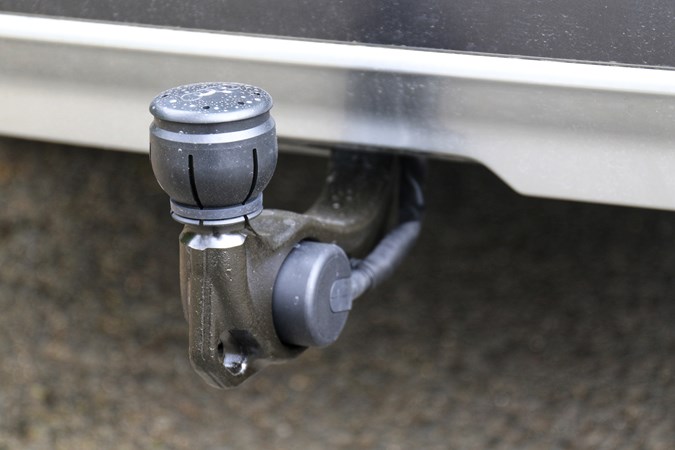
More relevant to me is the 100kg of vertical weight you can attach to the tow bar, which is nearly enough for me to sit on my bike while it’s on my carrier, so I know I can carry two heavy mountain bikes on it with no worry about damaging the car. The socket for the electrics is attached to the hitch too so there’s no faffing around under the bumper to get it hooked up.
I’ve taken the Allroad on some long drives to UK bike parks and it’s always a joy to get back into after a long day. There’s a space for everything I need to carry with me, plus the relaxing ride and torquey engine makes for a wafty drive. Small practicalities make a big difference too – the flat boot floor and high-lift tailgate mean I can sit in the boot to eat lunch when it’s raining, for example.
My only complain really is that the tow bar doesn’t come all the way out when you press the button in the boot, meaning to have to lock it into place at either end with your foot. That sounds picky but the one on my BMW 3 Series Touring was fully automatic, although it was £25 more expensive, so maybe that’s why.
TL;DR
Crikey, even this summary is quite long. But then again, this is probably the most important update.
Ride: Pretty much faultless on 19-inch wheels, can feel a bit wallowy
Noise levels: Quiet wind and engine, but more tyre noise than an A8 (as you’d expect)
Materials: Soft leather and grainy wood held together with shiny metal bits with panel gaps visible only with an electron microscope
Seats: Getting squashier as time goes on, but not the enveloping, old-French-car armchairs like I was hoping
Leg and headroom: Loads all round for everyone, except the fifth passenger
Cabin storage: Not class leading but there’s a place to put most things you could rationally be carrying; few places to hide sweets, though
Charging: Two USBs up front and a wireless phone charger, just the 12v in the back unless you pay extra
Boot capacity: Average for a car this size, would be huge if not for the sloping rear window
Boot usability: Pretty good, hooks and nets and things as standard, more optionally available
Towing: Huge 2.5t capacity and hefty kerbweight should make this a dream towcar
Update 3: Performance and handling
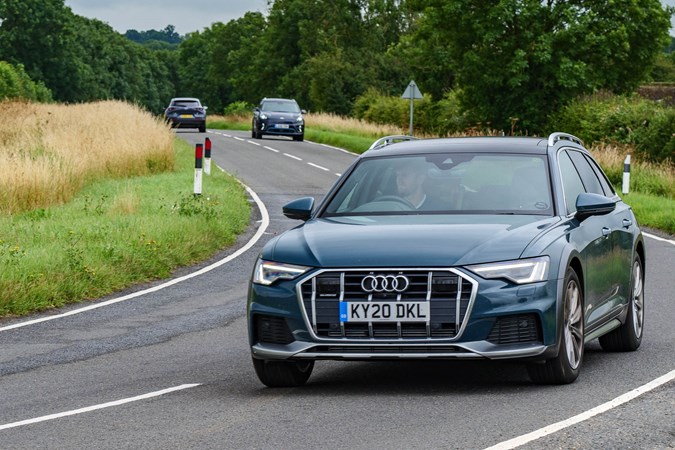
How does the diesel A6 Allroad perform and what other versions are available? I think this one is the best, and here’s why
There are three versions of the A6 Allroad on offer and I’ve picked the least powerful because it’s the best one. File that under ‘things I never thought I’d say’.
As I hinted at earlier this car (much like the driver) is built for comfort rather than speed. So while it’s important to have enough power, it doesn’t need anything more than that.
Put it this way – if you pick anything faster than our 45 TDI with its 231hp and 500Nm of torque, you’ll be tempted to use that performance, which will instantly make everyone in the car uncomfortable. And if you don’t use all the performance, then you’ve wasted your money. So you might as well not bother.
The two faster models are called 50 TDI and 55 TFSI, and offer up 286hp/620Nm of torque and 340hp/500Nm of torque respectively. Our car goes from 0-62mph in 6.7 seconds, while the more powerful versions take 5.9 and 5.5 seconds. All of them top out at a limited 155mph.
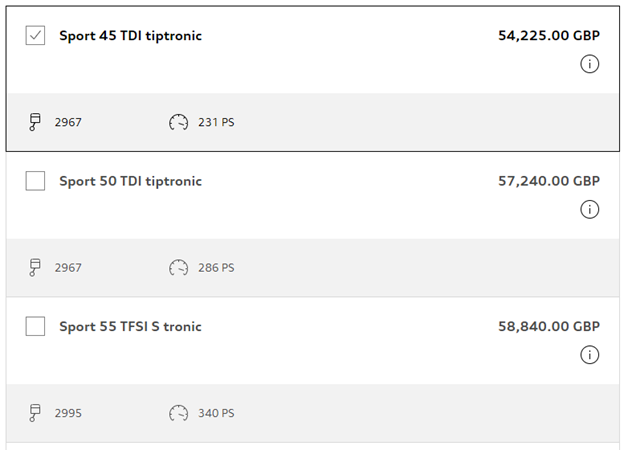
For context, this massive estate sprints to motorway speeds as quickly as my old Skoda Octavia vRS Estate, which considers itself a much sportier model. So, as I said, it’s fast enough.
There are only two considerations – firstly, that if you want the more powerful diesel the good news is that it promises the same fuel economy as my car (36.7-37.2mpg and 200-201g/km of CO2). And the other concerns gearboxes.
This generation of Audi A6 (and anything from the VW Group with a V6 diesel engine actually) uses a particularly sleepy eight speed traditional automatic ‘box rather than a more modern DCT. My long termer isn’t actually as bad as I remember from other models I’ve driven previously, to be fair, but it’s still quite slow to react.
It’ll catch you out in one of two ways – when you’ve slowed down to an almost stop at a roundabout and see a gap, where you’ll find a long pause between you putting your foot down and the car accelerating forward as the gearbox has a good think about what it wants to do. By that point the car you were trying to get out ahead of is now bearing down on you. Even from a standstill it’s quite hard to judge, either making loads of noise and revs without much movement, or firing itself off the line like a Tesla. There is no middle ground.
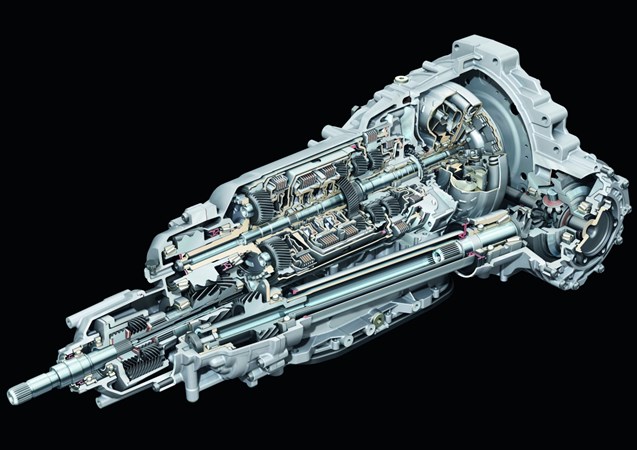
The other scenario will happen when you’re moving and want a small burst of acceleration, to overtake a slower moving car or to move from one speed limit to another, for example. You push and push the gas pedal and nothing happens. Then you push a bit further and suddenly the gearbox decides you must want third gear and all the forward momentum that the car can generate all at once. It’s not a very relaxing sensation, particularly when the engine has buckets of low-down torque and could easily haul itself along without kicking down so many gears.
Things improve a bit in the sportier S mode, and further still in manual, where you can use the paddles to shift up and down the gears (although it’ll still upshift at the redline for you) but even then the gearshifts are slow, and you can’t ask it to do two at the same time like on a DCT, so you have to plan for the upcoming corner a long way back. Or do what I do and just leave it in third, which seems to work for most situations.
So we eventually arrive at the crux of consideration two – because unlike the two diesels, the petrol A6 Allroad (called 55 TFSI) does use a dual-clutch gearbox, so will be significantly more decisive both in normal driving and more spirited moments. Whether it’s worth the hike in ticket price and running costs (although the latter only drops to 31.4-31.7mpg and 203-205g/km, which isn’t that far off) is down to you, but on the basis of what we’re about to discuss, I would suggest it is not.
What’s the handling like?
I’ve touched on this before but the A6 Allroad can be described as sporty only in the way it enables you to take part in sports, by ably towing a horsebox or in my case bounding down green lanes on the way to remote mountain bike trails.
In fairness, over time my opinion of the Allroad’s handling has changed quite a bit. At first I’d left it in Comfort or Auto mode most of the time and just accepted that bodyroll was part of the car’s charm.
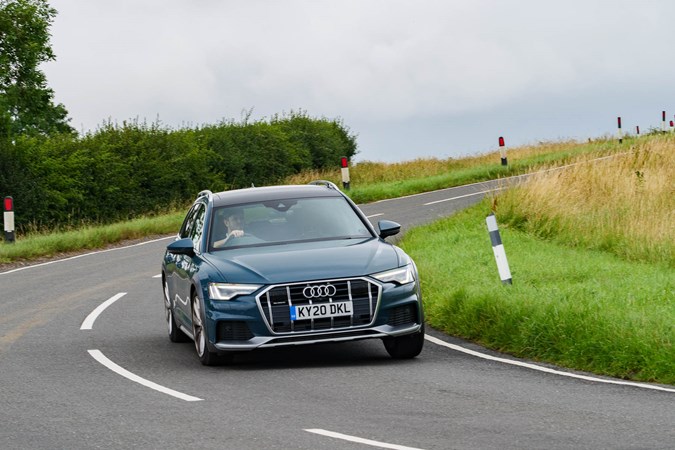
I avoided Dymanic mode because in my old A4 Avant that setting felt too firm for the UK. However, the Allroad’s smaller wheels, squashier tyres and more forgiving air suspension mean while it’s noticeably bumpier, it’s still quite usable, and enables much flatter cornering.
In this setting you still wouldn’t call the Allroad’s handling pin-sharp – this is a massive car in all directions, and it weighs more than two tonnes, but it can certainly get a move on when given enough space.
Add to that the enormous amount of all-weather grip the Quattro system develops and you’ve got a very capable (if not particularly entertaining) car. The steering could do with a bit more weight in my opinion but the brakes are certainly strong enough, and I don’t think I’ve seen the traction control light flickering even under quite spirited driving.
Potentially that’s because by the time you got anywhere near the limit of grip the bodywork would be banking so hard you’d have fallen out of the driver’s seat, but so be it.
Update 4: Audi A6 Allroad vs A8 limo
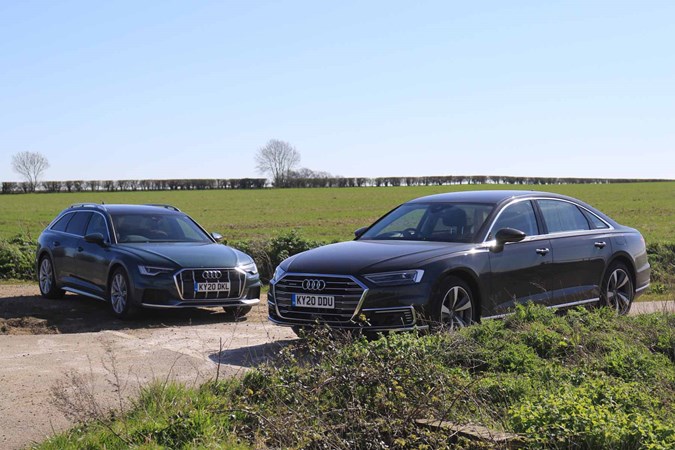
This month I compare my off-road estate with an executive class limousine to see if they are in any way interchangable, and how that affects the A6’s offering as a family car
A long time ago when I used to go to the office, me and my colleagues had a face-to-face conversation (most likely over a Bargain Bucket) about why car manufacturers don’t make estate versions of their luxury limos.
The subject of the conversation now seems as bizarre as being indoors in a large group, but the conclusion was that nobody would buy a big-booted limo, and car companies (like all businesses) exist to make profit, not just cars to satisfy the odd whims of motoring journalists. Plus, the Range Rover and Bentley Bentayga already exist, so if you want big practicality and waftability, buy an SUV.
However, my point was that not everyone wants an SUV, and long wheelbase limos make fabulous family cars. Squint for a moment at the facts – they’re near silent in operation, extremely relaxing to drive, usually have televisions in the back and offer enough passenger space in the rear for the largest of childseats. Plus you can have a massage while you drive. You know I’m right.
The only problem really is the lack of bootspace (and price). Sure, there’s usually a generous amount of litreage on offer (not just because you can option away the bulky Champagne fridge) but the problem is the saloon bootlid, which makes it hard to access that space. Or cram a child’s bike into. Hence the need for an estate version.

And so (eventually) we arrive at the point – nobody formally makes an estate limousine, but several companies make something close, and the best of all of them (in my opinion) is the Audi A6 Allroad. It just so happens that Parkers rates the A8 limo highly too, naming it 2021’s Luxury Car of the Year. A great basis for an unusual twin test then.
Is it comfy enough?
You might be wondering what makes the A6 Allroad a better limo impersonator than the standard A6 Avant. Well, it’s mainly down to the off-road biased nature of its longer travel suspension that lends the Allroad a more comfortable ride on tarmac. The emphasis for normal estate cars (like most business-class saloons) is sportiness – stiff, S Line suspension, big wheels that crash into potholes, that sort of thing.
My long termer has squashy springs and big balloon like tyres thanks to its relatively small 17-inch wheels, which means it rides nicely. In comparison to the A8 though? Well it won’t surprise you to hear that the limo rides better, but there’s not a lot in it. At the other end of the spectrum the A8 also handles in a more controlled state – it’s not sporty, but it doesn’t roll as much as the A6. So the saloon is better all-round, but in day-to-day driving the Allroad is satisfyingly cushier than a normal Avant.
Unsurprisingly the A8 is also much quieter inside – but then it ought to be, because the model tested had double glazed windows and a plug-in hybrid drivetrain, which means wind and engine noise are kept very much at bay. In the diesel V6 Allroad there’s a surprising amount of road noise considering the small wheels, and the engine pipes all sorts of whirs and whistles into the cabin. Again, it’s smoother and quieter than a four-cylinder diesel, and in fairness does make quite a good noise, but it’s undeniably louder inside than the A8.
What about the engine?
Again, hardly comparing apples with apples here but it’s worth pointing out how good the plug-in A8 is – you get 449hp, 700Nm of torque and a 0-62mph time of 4.9 seconds, offset against 109mpg and 60g/km of CO2. All of those numbers are better, frankly, than the Allroad’s diesel engine. On the flip-side though, you don’t have to keep my long termer charged up in exchange for its 231hp, 500Nm, and 0-62mph time of 6.7 seconds. Even when you try hard though, the Allroad will only deliver 36.7-37.2mpg and 200-201g/km of CO2. Quite a stark difference.
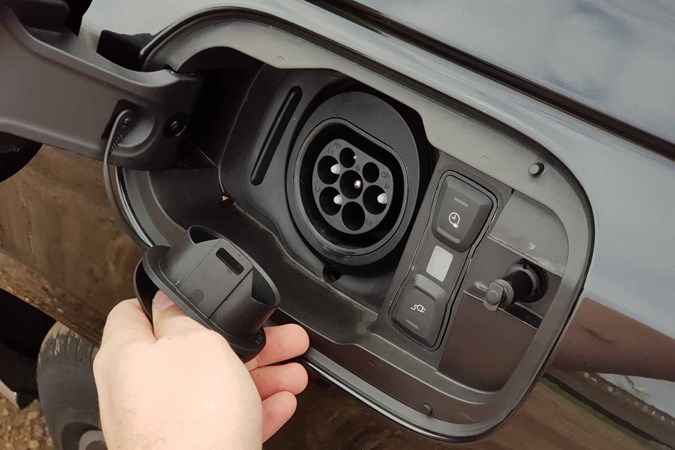
There’s also the Allroad’s gearbox problem I’ve complained about before, which just isn’t an issue in the A8. Why? Because that hesitancy at low rpm is completely removed by the electric motor, which whisks the limo away from a standstill while the A6 is stood trying to work out what gear to select.
Without sounding too conspiratorial, every non-hybrid Audi I’ve driven since feels like a hybrid with the electric motor removed. Take from that what you will.
Is it limo like inside?
I’ll go over this in more detail in next month’s update but the Allroad interior is excellent – you certainly wouldn’t feel ashamed ferrying a VIP who’s more used to an A8 around it in. Pick the Sport grade like I have and you can choose lovely brown leather and wood for the dash – Vorsprung cars get boring black leather and shiny plastic to match.
Otherwise the estate and limo are very similar – two big screens in the middle, one behind the wheel, and trim that feels extremely secure and squeak free.
In the back it’s a slightly different matter of course, as you don’t get the electrically adjustable armchairs of the A8 in the A6. But since my kids sit on child seats anyway, who cares? The televisions are noticeable in their absence of course, but you could fix that pretty easily with some aftermarket screens slung over the front headrests.
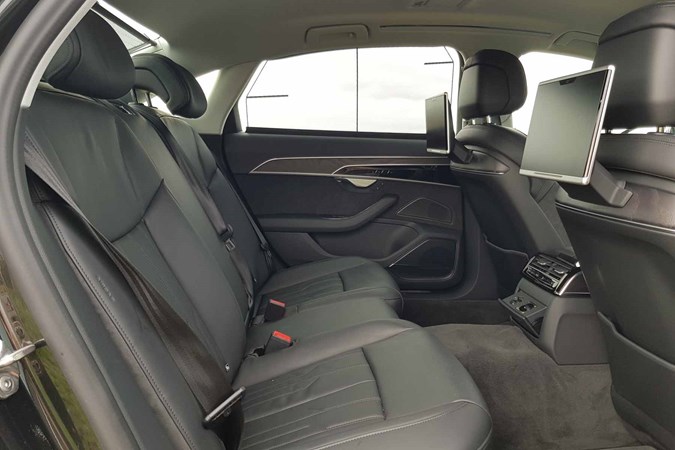
Finally though, an area where the A6 Allroad pulls ahead – the boot is vast, especially compared with the hybrid A8. You’re looking at 565/1,680 litres in my long termer with the seats up or down, and just 390 litres in the limo. Absolutely useless when it comes to transporting a child’s bike. Plus the A8 is nearly 40cm longer, making it trickier to park in city centres.
Verdict
Is the A6 Allroad a limo with a big boot? In a lot of ways, yes it is – comfortable, quiet and relaxing to drive, but with a vast loadspace that can easily shrug off a dishwasher (don’t ask me how I know this).
My long termer is also a bargain at £52,985 compared to the A8’s £88,195, although bear in mind the limo has a much more complicated drivetrain that is faster, cheaper to run and more refined.
In a lot more ways though the Allroad is not a limo – you don’t get reclining rear seats or double glazing, and there’s a bit more engine noise in the cabin than I’d like too. But the boot space advantage is undeniable, and for me that makes it a no-brainer choice over the A8. Plus it’s better off-road, if that’s your thing.
So for transporting VIPs the A8 is still the better bet, but for VVIPS (my kids) it’s absolutely perfect. Is it an estate limo? Close, but not really. Sublime family car though? One hundred percent.
Update 5: Options
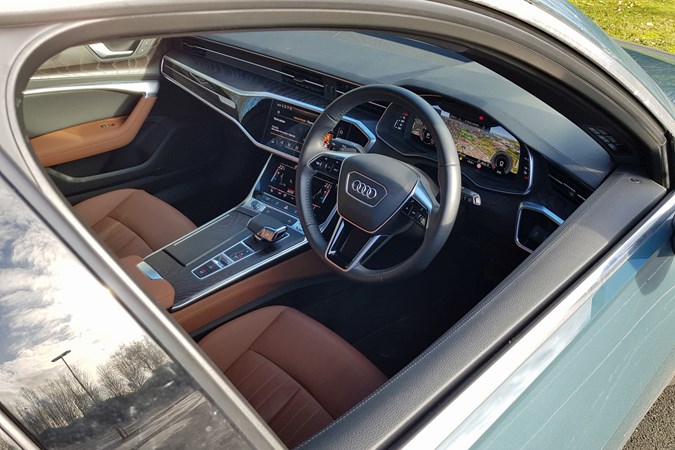
We added £12,000 worth of options to our Audi A6 Allroad, but how much of that was essential and what could we live without? Skip to the conclusion if you’re short on time.
When I specced this A6 Allroad my mission was to make it look as different as possible not just from the A6 Saloon we had run previously, but from the sober, business-like A6 range in general.
For me that meant several things – green paint, brown leather and wood trim. This is a countryside estate car after all, and I wanted it to look like a woodland cabin minus the mounted deer’s head. Or a tweed suit on wheels.
There are two trims for the Allroad called Sport and Vorsprung, the latter being an all-singing and all-dancing version with every option thrown at it. At the time it also meant being constrained to dull exterior colours, dark leather and a mix of piano black and aluminium interior trim. Basically, everything you’d associate with a normal A6 Avant.
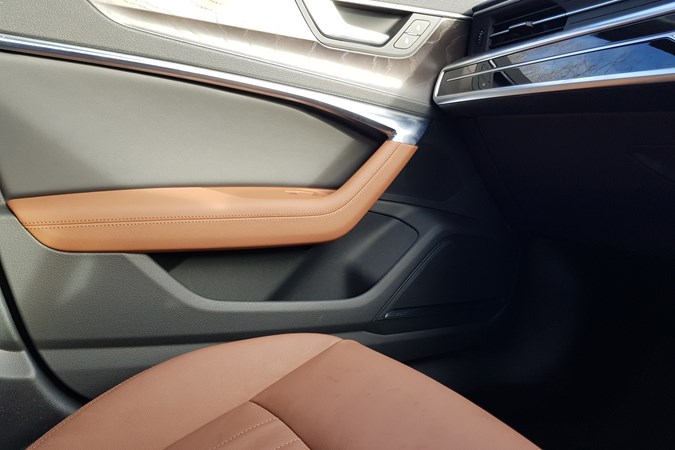
Pick the Sport version and suddenly options were unlocked, including Avalon Green pain (£685, worth every penny), Okapi Brown leather (a no cost option) and fine grain ash inlays for the dashboard (£350, but very convincingly wooden).
It also meant squashy seats as opposed to the Vorsprung’s sportier-looking chairs and 19-inch wheels rather than whopping great 21s. I wanted sidewall, not kerb appeal, so the smaller wheels were the thing that finally swung it. It was also close to £20,000 cheaper, but bear in mind the Vorsprung comes with a lot of extra kit.
So from that base I chose some options that I thought were either essential or at least interesting, and the price jumped from £52,985 to £64,195 – still less than a Vorsprung, but undeniably quite a lot of cash. So which boxes (on top of the ones dealt with above) were worth ticking?
Fuel tank increase (£115): The long range tank is ten litres larger than the standard one (73 vs 63 litres) which might not sound like much, but it’s the difference between a full tank giving around 600 miles as opposed to just over 500. As filling a car with fuel is one of the most boring things you can do with your time and this option reduces the frequency of having to do it, I reckon it’s worth it, especially considering it’s by far and away the cheapest option here. Basically the price of a full tank from empty from a motorway services. Verdict – worth it.
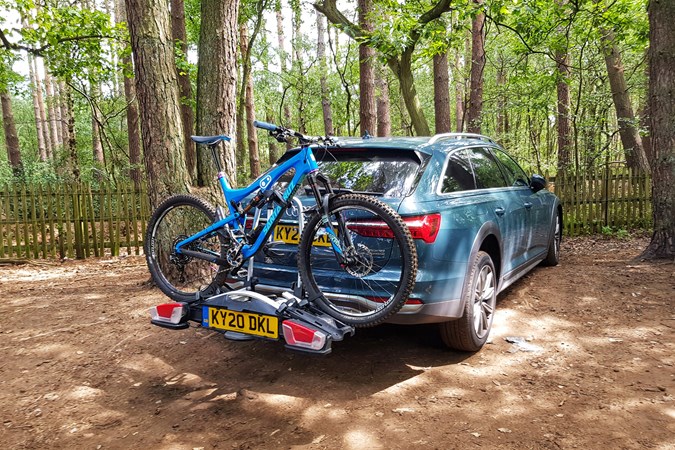
Towing hitch, electrically swivelling (£825): Marginally cheaper than the one on my BMW 320d but also not fully automatic – it pops out at the push of a button and then you have to lock it in place. In reality this isn’t much more work. It also comes with a very nice Audi branded plastic cover that I took off and immediately lost. Also once when I was connecting the electrics for my bike rack I tripped the hands-free boot sensor and the tailgate tried to eat my bike, so be careful of that. Verdict – definitely worth it for transporting bikes, or making use of the 2.5 tonne towing capacity that you will almost definitely use at some point, otherwise why are you buying an Allroad?
Panoramic glass sunroof (£1,950): A much more luxurious upgrade than you might think, because it makes the cabin seem much larger and airier. Two blinds divided by a horizontal beam also means I can close the one in the back when the kids are napping and keep the front one open. Mostly essential for hot summer days when you can open all the windows and roof with the key from afar and banish arid air from the car. Verdict – do it.
Tour pack (£1,950): The same price as the sunroof but packing a lot more kit, this option gets you a load of driver assistance systems that pay for themselves on an extended drive. We’re talking level two autonomy here – adaptive cruise control and active lane keep – that promise to take the sting out of long motorway miles. To an extent they do, except for the fact the A6 is a wide car and it sometimes feels like the system has a hard time centring it in a narrow lane. Camera-based traffic sign recognition is very handy for keeping track of speed limits and Audi Pre-sense Basic closes the windows and sunroof as well as tightening the seat belts in the event of a crash. Verdict – worth it if you regularly drive long distances.
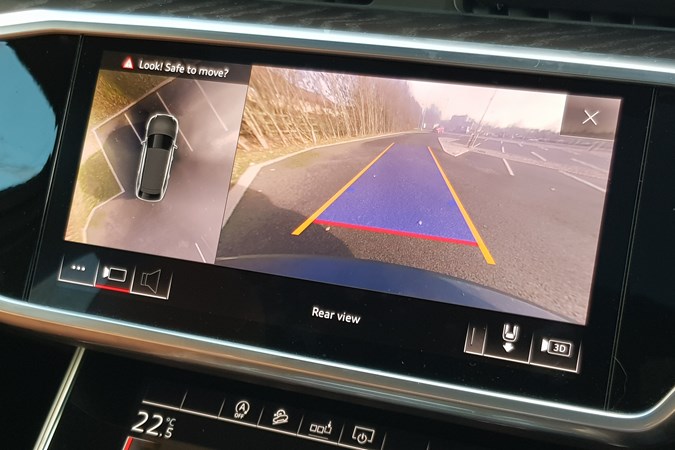
Technology pack (£1,495): A very nice upgrade in the form of a load of big, high-res screens, including the 12.3-inch Virtual Cockpit behind the wheel to compliment the 10.1- and 8.6-inch infotainment screens. These get 3D city mapping, Google Earth and points of interest, as well as natural voice recognition (so you can give conversational commands rather than set ones like ‘navigate to’ etc).
It’s difficult to comment on this really because I’ve not driven a modern Audi without this added – that suggests the dealer is going to twist your arm into adding it to your car too. In fairness it does all work extremely well, and the wireless charging pad is a very useful addition. Verdict – not essential but given that one of this car’s strongest assets is its tech-filled cabin, you’d be missing out not to pick it.
Comfort & sound pack (£1,895): Let’s clear this up immediately – you won’t need any of this stuff, but it’s sure nice to have. The most valuable element is the advanced key, which means you can open and close the doors with the key in your pocket. The 360-degree view camera is also particularly useful on a car of this size. An automatic Park Assistant plus system might appeal to you for the same reason, but I never used it because I found it took longer than just parking, plus my car usually had a bike rack on the back and that felt like it might go wrong very quickly.
The main reason I’d pick this option time and time again though is for the Bang & Olufsen premium sound system, with 16 speakers including a thumping subwoofer. If you like music and spend any length of time in the car then it’s worth the near £2,000 price tag alone, if only because you can crank it up to 11 and not worry about annoying your neighbours. It sounds brilliant, although to my ears is set up for electronic music (all bass and treble) and isn’t quite as good for anything with guitars. Extended LED lighting, again, is a nice touch but you can probably live without it, even if the ability to change the colour of the light up Quattro badge is extremely cool. Verdict – worth it for the stereo, if you’re not bothered about music though it starts to look like quite an expensive addition.
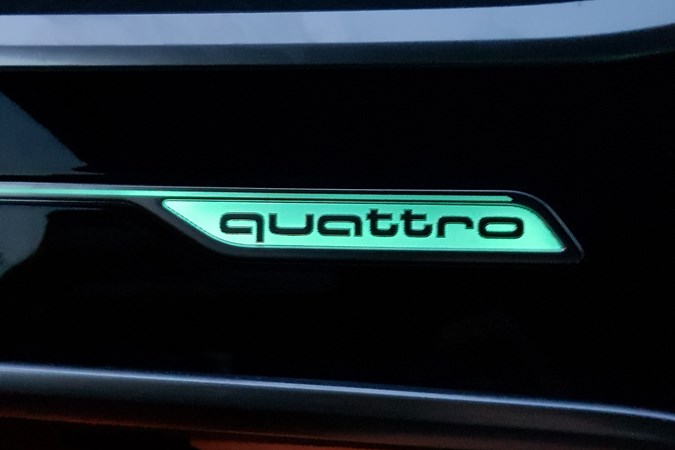
Altogether I’m really happy with the spec of the Allroad – it looks great and rides nicely, and doesn’t feel like it’s lacking anything essential that the Vorsprung brings. One thing though, I would probably pick the sports seats (£400) in hindsight – the standard ones turned out to not be very comfortable on a long drive due to lack of bolstering and no extendable thigh cushion
A long time ago when I used to go to the office, me and my colleagues had a face-to-face conversation (most likely over a Bargain Bucket) about why car manufacturers don’t make estate versions of their luxury limos.
The subject of the conversation now seems as bizarre as being indoors in a large group, but the conclusion was that nobody would buy a big-booted limo, and car companies (like all businesses) exist to make profit, not just cars to satisfy the odd whims of motoring journalists. Plus, the Range Rover and Bentley Bentayga already exist, so if you want big practicality and waftability, buy an SUV.
However, my point was that not everyone wants an SUV, and long wheelbase limos make fabulous family cars. Squint for a moment at the facts – they’re near silent in operation, extremely relaxing to drive, usually have televisions in the back and offer enough passenger space in the rear for the largest of childseats. Plus you can have a massage while you drive. You know I’m right.
The only problem really is the lack of bootspace (and price). Sure, there’s usually a generous amount of litreage on offer (not just because you can option away the bulky Champagne fridge) but the problem is the saloon bootlid, which makes it hard to access that space. Or cram a child’s bike into. Hence the need for an estate version.
And so (eventually) we arrive at the point – nobody formally makes an estate limousine, but several companies make something close, and the best of all of them (in my opinion) is the Audi A6 Allroad. It just so happens that Parkers rates the A8 limo highly too, naming it 2021’s Luxury Car of the Year. A great basis for an unusual twin test then.
Ride and comfort
You might be wondering what makes the A6 Allroad a better limo impersonator than the standard A6 Avant. Well, it’s mainly down to the off-road biased nature of its longer travel suspension that lends the Allroad a more comfortable ride on tarmac. The emphasis for normal estate cars (like most business-class saloons) is sportiness – stiff, S Line suspension, big wheels that crash into potholes, that sort of thing.
My long termer has squashy springs and big balloon like tyres thanks to its relatively small 17-inch wheels, which means it rides nicely. In comparison to the A8 though? Well it won’t surprise you to hear that the limo rides better, but there’s not a lot in it. At the other end of the spectrum the A8 also handles in a more controlled state – it’s not sporty, but it doesn’t roll as much as the A6. So the saloon is better all-round, but in day-to-day driving the Allroad is satisfyingly cushier than a normal Avant.
Unsurprisingly the A8 is also much quieter inside – but then it ought to be, because the model tested had double glazed windows and a plug-in hybrid drivetrain, which means wind and engine noise are kept very much at bay. In the diesel V6 Allroad there’s a surprising amount of road noise considering the small wheels, and the engine pipes all sorts of whirs and whistles into the cabin. Again, it’s smoother and quieter than a four-cylinder diesel, and in fairness does make quite a good noise, but it’s undeniably louder inside than the A8.
Performance
Again, hardly comparing apples with apples here but it’s worth pointing out how good the plug-in A8 is – you get 449hp, 700Nm of torque and a 0-62mph time of 4.9 seconds, offset against 109mpg and 60g/km of CO2. All of those numbers are better, frankly, than the Allroad’s diesel engine. On the flip-side though, you don’t have to keep my long termer charged up in exchange for its 231hp, 500Nm, and 0-62mph time of 6.7 seconds. Even when you try hard though, the Allroad will only deliver 36.7-37.2mpg and 200-201g/km of CO2. Quite a stark difference.
There’s also the Allroad’s gearbox problem I’ve complained about before, which just isn’t an issue in the A8. Why? Because that hesitancy at low rpm is completely removed by the electric motor, which whisks the limo away from a standstill while the A6 is stood trying to work out what gear to select.
Without sounding too conspiratorial, every non-hybrid Audi I’ve driven since feels like a hybrid with the electric motor removed. Take from that what you will.
Interior and practicality
I’ll go over this in more detail in next month’s update but the Allroad interior is excellent – you certainly wouldn’t feel ashamed ferrying a VIP who’s more used to an A8 around it in. Pick the Sport grade like I have and you can choose lovely brown leather and wood for the dash – Vorsprung cars get boring black leather and shiny plastic to match.
Otherwise the estate and limo are very similar – two big screens in the middle, one behind the wheel, and trim that feels extremely secure and squeak free.
In the back it’s a slightly different matter of course, as you don’t get the electrically adjustable armchairs of the A8 in the A6. But since my kids sit on child seats anyway, who cares? The televisions are noticeable in their absence of course, but you could fix that pretty easily with some aftermarket screens slung over the front headrests.
Finally though, an area where the A6 Allroad pulls ahead – the boot is vast, especially compared with the hybrid A8. You’re looking at 565/1,680 litres in my long termer with the seats up or down, and just 390 litres in the limo. Absolutely useless when it comes to transporting a child’s bike. Plus the A8 is nearly 40cm longer, making it trickier to park in city centres.
Verdict
Is the A6 Allroad a limo with a big boot? In a lot of ways, yes it is – comfortable, quiet and relaxing to drive, but with a vast loadspace that can easily shrug off a dishwasher (don’t ask me how I know this).
In terms of value for money the A6 is a bargain at £52,985 compared to the A8’s £88,195, although bear in mind the limo has a much more complicated drivetrain that is faster, cheaper to run and more refined.
In a lot more ways though the Allroad is not a limo – you don’t get reclining rear seats or double glazing, and there’s a bit more engine noise in the cabin than I’d like too. But the boot space advantage is undeniable, and for me that makes it a no-brainer choice over the A8.
So for transporting VIPs the A8 is still the better bet, but for VVIPS (my kids) it’s absolutely perfect. Is it an estate limo? Close, but not really. Sublime family car though? One hundred percent.
TL;DR
Got a Sport model with these options, and maybe the sports seats if you have long legs.
Update 6: Farewell
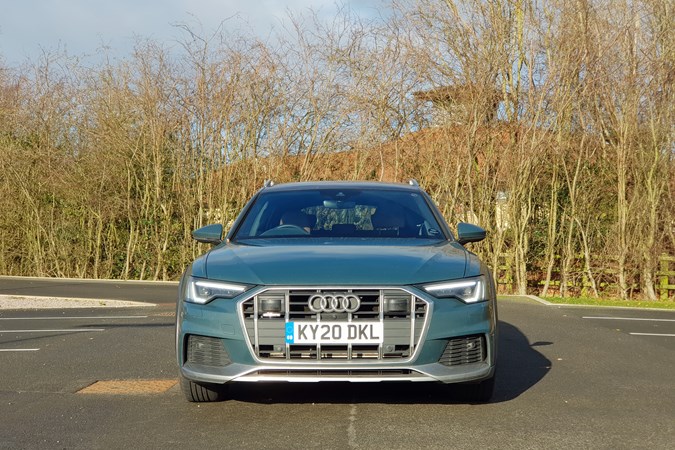
Too soon it’s already time to wave goodbye to the Audi A6 Allroad. But has it been a good car for transporting mountain bikes and family members alike?
All roads must come to an end and I’m more conflicted about the A6 than I expected to be. When my Skoda Octavia vRS went back I was bereft/tried to buy it, and while on the whole I’m very sad to see the big Audi leave, I’m not desperately trying to realign my finances to keep it on my driveway. And not just because I can’t afford it.
Firstly I think it’d be fairer to consider my verdict without any sentiment, because this comes from fun things a car has enabled you to do – bike trips, long drives to see family or a holiday in Europe for example – all of which have been largely off the cards in 2020, at no fault of the A6.
That said, it will always be the car in which we survived the first Covid 19 lockdown, the car that sat unused on my driveway for days and sometimes weeks but always started without drama, and speaking very personally, the last car I configured with my friend and former colleague Tom Goodlad.
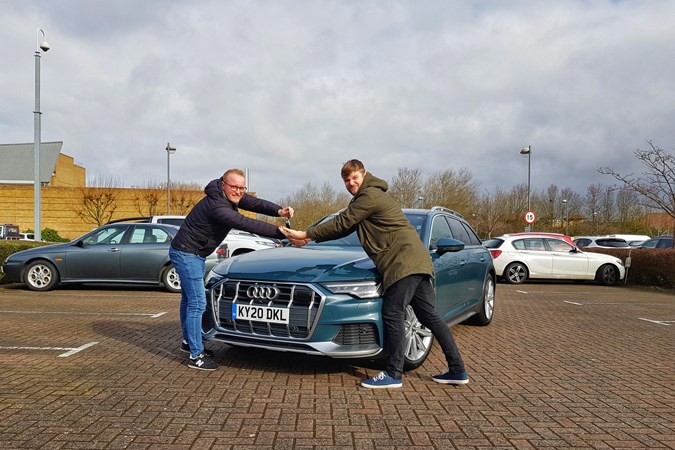
– Pre-covid when it was acceptable to shake hands and recreate those awkward car dealer handover pictures Tom and I used to enjoy looking at together on social media
And what a spec it was – I don’t think Audi’s resale department was too pleased with our green paint, brown leather and wood combo but plenty of people in petrol stations and car parks commented on how much they liked it. The postman even knocked on my door one morning to tell me how good it looked, despite not actually having any letters for me. It was brilliant, and so completely separate from the standard A6 Avant range.
It drove completely differently too, offering a really comfortable ride from its long travel air suspension and small wheels, with a wafty quality that was not entirely unlike the A8 limo that I originally planned to benchmark it against, back when such things were practical considerations.
Where the Allroad element really came into its own however was when lockdown eased and I was able to get out on my mountain bike again. Of course everybody else had the same idea at the same time and while the place I usually go to ride is more than large enough to accommodate hundreds of post-homestuck shredders, the car park is not. That meant parking, more often than not, quite a long way down the rugged track that leads to the bike trails. Not something I’ve attempted in previous two-wheel drive long termers, but an absolute breeze for the Allroad.
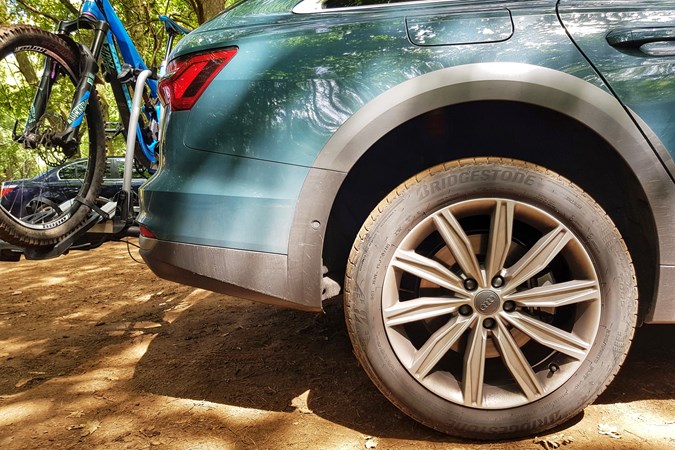
I didn’t get to do a lot of the Paris-Dakar style driving I had planned (because virus) but when we did leave the beaten track the A6 felt imperious. Important to remember though this is a car for going off-road, not a car for going off-roading. Nobody is going to take their Allroad green-laning for the sake of it, but if like me you find yourself having to venture onto untrodden paths for practical reasons, this jacked-up estate will really take care of you (by which I mean it basically does all of the work).
From farm tracks to the race track, the A6 took a surprisingly wide breadth of tasks in its stride. I’d previously complained about how much it rolled in corners but it took a couple of sneaky laps at Silverstone to discover just how planted you can make the big A6 wagon feel if you use the more sporty driving modes.
Again, it’s unlikely A6 owners are going to take them on track days – my long termer only found itself there because we were shooting a CAR magazine group test and the Allroad had already proven itself as the ultimate moving photography platform (more on this later) – but seeing how effective the Dynamic mode was on track lead me to rethink using it on the road. I’d previously avoided it because in my old A4 long termer it made the suspension too firm for road use, but in the A6 it’s more usable day-to-day.
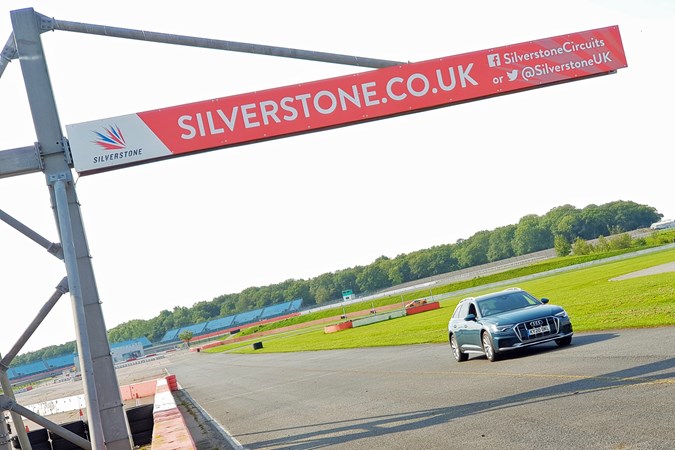
Practicality was always a strong point but in fairness that’s not specific to the Allroad. As well as effortlessly accommodating a new dishwasher and providing more than adequate legroom for my children, the boot was large enough for both of their bikes, with mine and my wife’s on the towbar rack.
And as I’ve mentioned above the combination of the A6’s best traits – smooth ride, powerful V6 and vast seat-down boot capacity meant it was the first choice for our videography Elliot when he needed a moving platform to capture tracking shots.
I don’t expect that ability is something many A6 owners will be looking for but it makes a good point about the car overall. If it’s quiet and stable enough for capturing high-quality video content, it’s probably going to be a relaxing place to while away a long journey.
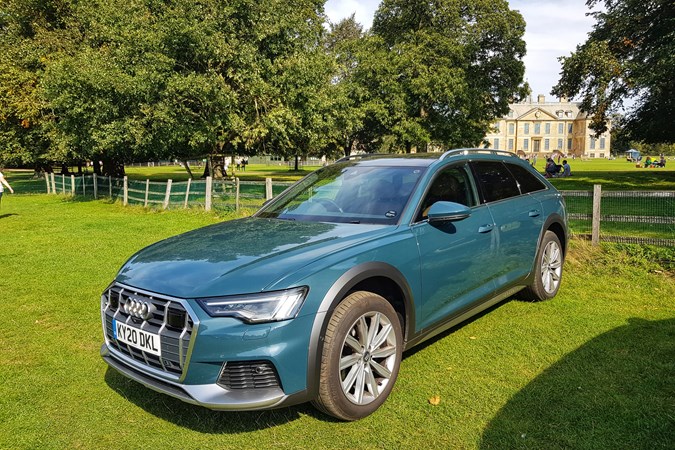
Onto the negatives then – and the biggest is the gearbox, which we’ve already discussed so I’ll spare you the detail again. Only to say it makes the A6 feel really lethargic at low speed and when attempting to pull away quickly, but in fairness is at least admirably smooth when you’re up and moving.
The boot wasn’t as big as I thought it was going to be. An Avant is not really the same as an estate, I’m learning, rather a slightly boxier saloon with a larger tailgate. The boot’s pretty big, don’t get me wrong, but it’s dwarfed by externally smaller cars like my old Octavia.
It didn’t cost too much to run in the greater scheme of things but sub 40mpg meant even with the extended fuel tank, you’d be pushed to get 600 miles between fill ups. It wanted some oil at 7,000 miles, which set me back £20 (although it didn’t need all of it) but curiously didn’t ask for any AdBlue. My diesel A4 Avant long termer drank the stuff, although maybe that says more about my driving than the car.
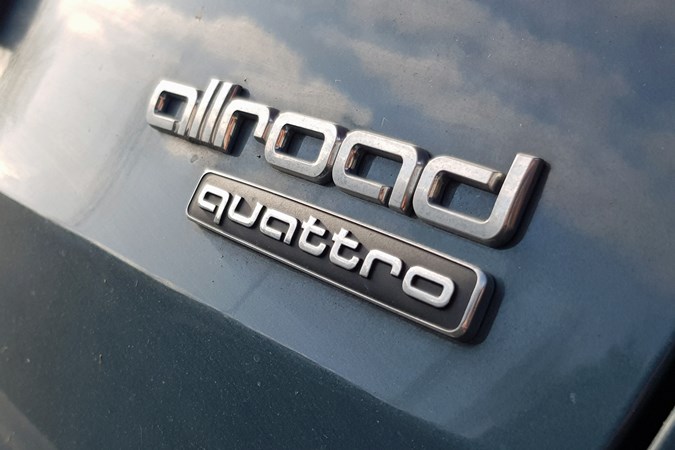
Weirdly my biggest problem with that previous Audi A4 Avant was the fact that no matter how much I loved it (and I really did), it never felt like my car. It was quite expensive and really shouted about it with its big wheels and glittery silver paint, which has never really been my thing.
What’s odd is that the A6 is basically twice the price and yet giving it back felt like saying goodbye to one of my own possessions, rather than returning something I’d borrowed. It wasn’t perfect like I’ve said, but then again neither am I, and that made it quite endearing. What it was though was a steady and reliable family car that made life a lot easier in a period of massive uncertainly and disruption.
Here’s an example of that to conclude this test – the other day I was in a front-drive SUV and had to do a three-point turn on that muddy lane near the bike park I mentioned before. I didn’t even consider this to be an issue because the Allroad used to shrug off the same manoeuvre. Then I realised the wheels were spinning and I wasn’t going anywhere. Ramblers were looking at me. They could tell I was an idiot and was probably going to have to ask for help. It was only a massive clog of gas that slowly but surely got us going again.
I was really surprised at this because the Allroad would have had absolutely zero issue doing the same. And I think that’s my resounding memory of this car – it made everything look so easy it was hard to appreciate how talented it was until it was gone.
